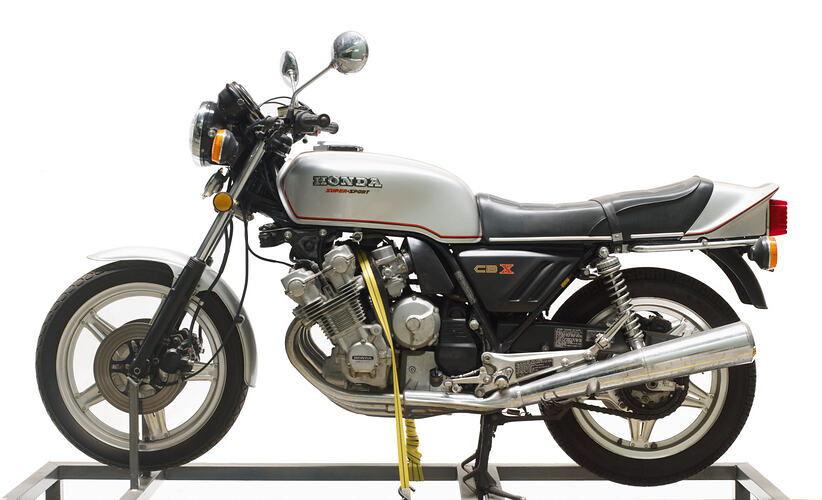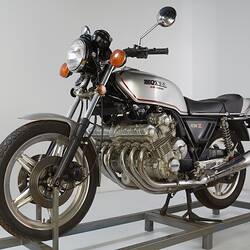Soichiro Honda, founder of the Honda Motor Company was born in a small rural village near the Japanese city of Hamamatsu in November 1906. He began working as an apprentice mechanic in the 1920s and established his own motor business shortly before the Second World War, founding the Honda Motor Company in 1948. His first commercial motorcycle was the 98 c.c D-type which was essentially a powered bicycle. The growth of the company was rapid with 32,000 motorcycles made in 1953. After expanding production capacity by purchasing the latest machine tools in Europe and the USA, Honda exported 168,554 motor cycles per year in 1960. In the 1960s the company also began production of motor vehicles and initiated its successful participation in motorcycle racing.
By the 1970s Honda was operating the largest motorcycle factory in the world producing a range of bikes from a 49cc single-cylinder moped to the four-cylinder 999cc GL1000 Gold Wing released in 1974. The Gold Wing featured BMW-like shaft drive with a top speed of 125 mph (200 km/h). By the late 1970s Honda's technological lead was being challenged by other Japanese motorcycle firms such as Suzuki, Kawasaki and Yamaha. New designs were released with greater horsepower which became known as 'Superbikes' and Honda resolved to beat the competition with a new design which would be the fastest and most technically advanced motorcycle in the world. Development of the CBX 1000 was led by the outstanding engineer Shoichiro Irimajiri who had been responsible for much of Honda's racing success in the 1960s. The new six-cylinder twin-OHC engine was a development of the 24-valve RC-165 250 c.c racing engine of 1965. The only other manufacturer to release a six-cylinder production motorcycle before Honda was the Italian firm Benelli with their 747.7cc '750 Sei' model, first produced in 1974. Kawasaki released their six-cylinder Z1300 bike in 1979.
The CBX 1000 was announced at a press conference in Japan in December 1977 although design work had begun in 1975. Despite its weight the CBX 1000 was capable of 136 m.p.h (218 km/h) and was aimed at the American market. There was a generally positive response from the motorcycling press but sales were slow and the CBX 1000 had to be repositioned as a sports touring bike (CBX 1000B) with a de-tuned engine in 1981. It was also expensive with performance not much greater than more conventional bikes. This change to a cruising machine failed to generate sales required and production ceased in 1982 however remaining stocks continued to be sold for some time afterwards and many surplus CBX 1000 bikes were donated to technical colleges in the US for training mechanics. Major problems of the design were size and weight which made it suitable for experienced riders only. A modified production CBX 1000 was raced in Australia by Michael Cole for the Honda team in the Castrol Six Hour Classic at Calder Raceway, Melbourne in 1978.
More Information
-
Keywords
-
Localities
-
Authors
-
Article types

